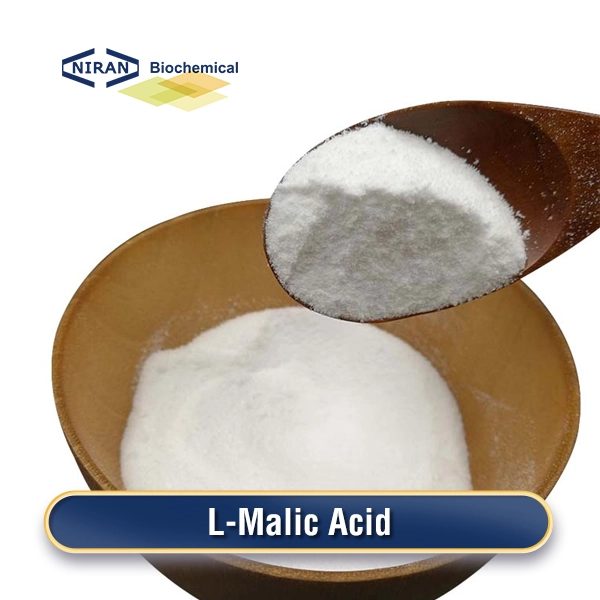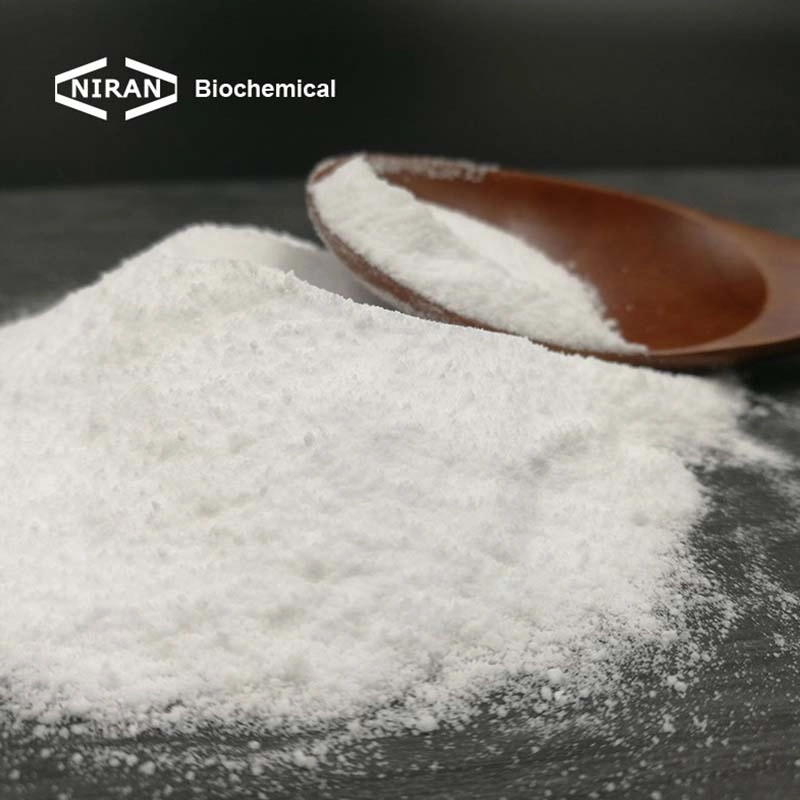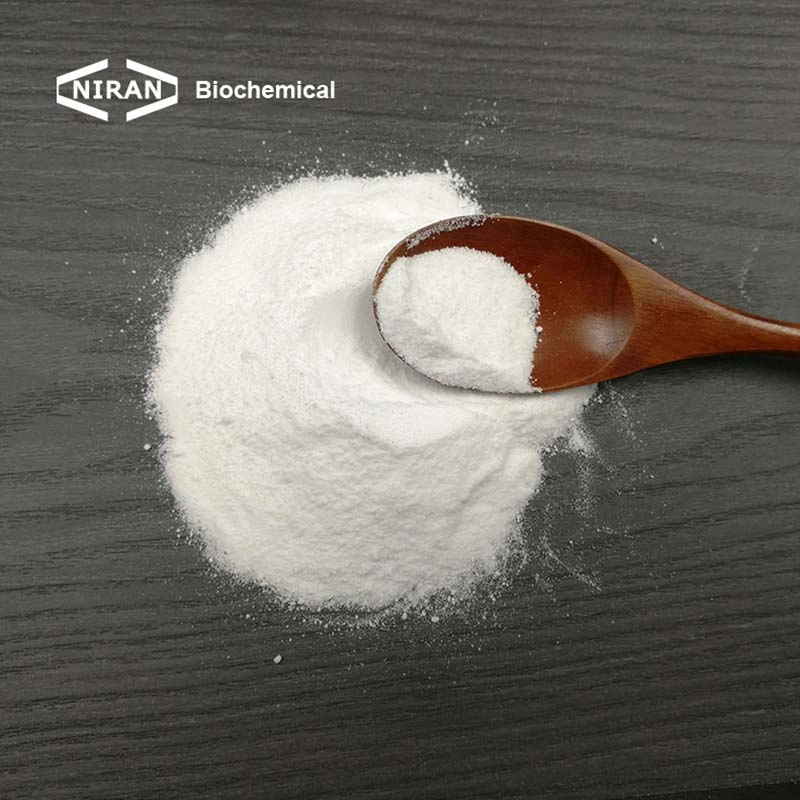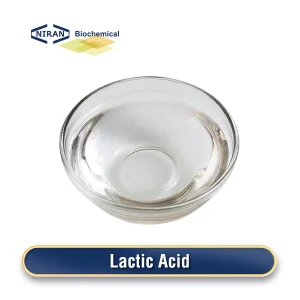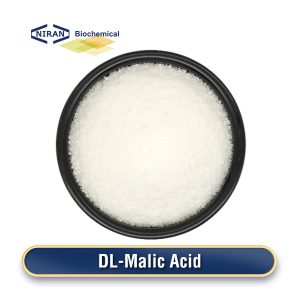What is L-Malic Acid?
L-Malic Acid is a significant natural organic acid, existing in the form of white crystals or crystalline powder. It possesses a distinct sour taste and strong hygroscopic properties, readily dissolving in water and ethanol while exhibiting antioxidant characteristics. It is widely present in plants, animals, and microbial cells. It has the sour taste of natural apples, hence the name. In particular, fruits such as apples, cherries, grapes and lemons are rich in L-malic acid, which is the source of the sweet and sour taste of fruits. It is mainly used as a natural acidulant, preservative, moisturizer and antioxidant in the food industry. L-Malic Acid also finds applications in the pharmaceutical and cosmetic industries.
The mainstream production process of L-Malic Acid is to use a one-step fermentation method (direct fermentation method). It is internationally recognized that food additives produced by fermentation can be regarded as “pure natural” products. With increasing awareness of food safety and health, research into direct fermentation for L-malic acid production has garnered significant attention.
The one-step fermentation method is also called the direct fermentation method, which is a method of using a microorganism to directly ferment sugar raw materials or non-sugar raw materials (such as normal alkanes) to produce L-malic acid. In recent years, the research on the production of L-malic acid by direct fermentation has made rapid progress. The microorganisms utilizing starch raw materials to produce L-malic acid primarily include Aspergillus flavus, Aspergillus oryzae, and Aspergillus parasiticus, among others. The biggest feature of these microorganisms is that the malate dehydrogenase in the step of malic acid to oxaloacetic acid in the tricarboxylic acid cycle is missing or at a low level, which allows malic acid to accumulate. Most of these strains have the ability to saccharify starch and can directly use starch raw materials.
The raw material source is very rich, the fermentation process conditions are mild, and the product is L-type. Therefore, the one-step fermentation method has more advantages than other methods.
Related parameters:
| Items | Standards |
| Assay | 99.0% Min |
| Specific Rotation [a]D25℃ | -1.6°~-2.6° |
| Residue on ignition | 1% Max |
| Sulphate | 0.02% Max |
| Chloride | 0.004% Max |
| State of Solution | Clarification |
| Fumaric Acid | 0.5% Max |
| Maleic Acid | 0.05% Max |
| Arsenic(As) | 2 ppm Max |
| Heavy Metals(Pb) | 10 ppm Max |
| Lead(Pb) | 2 ppm Max |
| Packaging | 25kg/bag, 20MT/20FCL with pallet, 25MT/20FCL without pallet |
Recommended dosage:
| Food name | Maximum usage(g/kg) |
| Carbonated beverages | 0.6-1.2 g/kg |
| Salad dressing | 0.5-1.0 g/kg |
| Seasonings | 0.6-1.2 g/kg |
| Ham | 0.4-0.6 g/kg |
| Bread | 0.4-0.6 g/kg |
| Canned food | 0.5-1.0 g/kg |
| Cheese | 0.5-0.8 g/kg |
| Biscuits | 0.4-0.8 g/kg |
| Leaving agent | 0.4-0.6 g/kg |
| Coffee | 0.4-0.6 g/kg |
| Gel candy | 0.8-1.2 g/kg |
L-Malic Acid has a wide range of uses
1. Acidity adjustment
L-malic acid is widely used as a food acidifier, acidifier and acidifier. It can be used in juice, carbonated drinks, jelly, candy, yogurt, cake and other foods to give the food sour taste and taste.
2. Antioxidant properties
L-malic acid can promote the production of ATP in cells and strengthen the body’s energy metabolism. Under the action of malate dehydrogenase, L-malic acid generates NAD(P)H, which has been found in some recent studies to directly scavenge free radicals and play an antioxidant role. As an important electron carrier and hydrogen donor in organisms, NAD(P)H participates in the reduction and regeneration of various antioxidant substances, maintains the body’s antioxidant capacity, and has an indirect antioxidant effect.
As an important electron carrier and hydrogen donor in organisms, NAD(P)H participates in the reduction and regeneration of various antioxidant substances, maintains the body’s antioxidant capacity, and can directly scavenge free radicals and play an antioxidant role.
3. Hangover relief
L-malic acid is rich in pectin, malic acid, vitamins, minerals and enzymes. It is rich in nutrients and acidic, has a bactericidal effect, can help clean the digestive tract, and help the stomach and intestines eliminate alcohol.
4. Promote metabolism
L-malic acid can promote the normal operation of metabolism and can make various nutrients decompose smoothly, promote the absorption and metabolism of food in the human body, low in calories, can effectively prevent obesity, and can play a role in weight loss.
5. Increase stability and pH value adjustment
Adding malic acid to drugs can increase their stability and promote the absorption and diffusion of drugs in the human body; the production of compound amino acid infusion uses L-malic acid to adjust the pH value. At the same time, as one of the ingredients of mixed amino acid infusion, it can improve the utilization rate of amino acids, and is used to treat uremia, hypertension, etc. and reduce the damage of anticancer drugs to normal cells. It can also be used as an auxiliary drug after cancer radiotherapy and chemotherapy, and can also be used in burn treatment to promote wound healing.
User asked question:
Q: Why users choose malic acid instead of lactic acid?
A: Although malic acid and lactic acid are both common acidulants, malic acid tastes far better than lactic acid, so it is more widely used in the food and beverage industry; not only that, malic acid is more stable in high temperature environments.
Q: What precautions should be observed when storing L-malic acid?
A: To store L-malic acid, first of all, the environment should be kept dry and avoid moisture. Because malic acid is solid or powder, the humidity requirement is relatively low.
Secondly, the appropriate storage temperature is crucial. Generally, malic acid should be stored at a lower temperature, preferably within the room temperature range. High temperature may cause malic acid to decompose or unstable chemical reactions.
Malic acid is highly corrosive, especially when it comes into contact with metal ions (such as iron, copper, etc.). During storage, avoid contact with metal containers or other metal products to prevent chemical reactions.
Q: What is the fundamental distinction between DL-malic acid and L-malic acid?
A: First, DL-malic acid is a mixed organic acid consisting of two stereoisomers: L-malic acid and D-malic acid. DL-malic acid can be obtained through fruit extraction or chemical synthesis, but because the former may be more complicated in the extraction and purification process, resulting in higher production costs, it is generally not adopted, and basically relies on chemical synthesis.
In addition to the fruit extraction method, there are currently two domestic production methods for L-malic acid. One is a chemical synthesis method similar to DL-malic acid, and the other is fermentation. In recent years, the development of fermentation has been relatively rapid, which not only helps to improve the purity and consistency of the product, but also can reduce production costs, reduce the impact on the environment, and meet the requirements of sustainable development.
In addition, DL-malic acid is widely used as an acidifier, flavoring agent and preservative in the food and beverage industry, and also in pharmaceuticals and cosmetics, while L-malic acid is mainly used in the fields of medicine and research, such as as an active ingredient in drugs or a reagent in laboratory research, and also has certain applications in the food industry.
L-malic acid is sometimes considered to be more biologically active and has more specific pharmacological effects than DL-malic acid, so it may be more important in some pharmaceutical applications.

